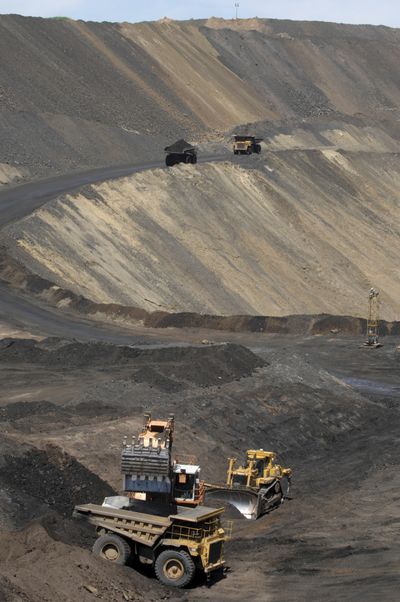U.S. officials OK eastern Idaho phosphate mine expansion

BOISE – U.S. land managers have approved a final plan for expanding an open-pit phosphate mine in southeastern Idaho proposed by the J.R. Simplot Company.
The U.S. Forest Service and U.S. Bureau of Land Management on Tuesday approved the project that’s expected to keep about 600 workers employed for another three years at Simplot’s existing Smokey Canyon Mine and Don Plant processing facility in Pocatello.
“Phosphate mining in southeast Idaho is critical to provide minerals for use in products that support agriculture, wildfire suppression, and other industries in Idaho and elsewhere and to contribute to the region’s economy,” William Perry Pendley, the Bureau of Land Management’s deputy director for programs and policy, said in a statement.
Phosphate mining has been a major business in the region for decades. Giant open pits are created to extract the phosphate ore that is turned into fertilizer used by farmers. But the area has more than a dozen federal Superfund sites requiring cleanup from past phosphate mining from multiple companies.
The East Smokey Panel Mine is the second phosphate mine U.S. officials have approved for Idaho-based Simplot this year. In April, the Forest Service and Bureau of Land Management approved the Dairy Syncline Mine Project, also in southeastern Idaho. Simplot started mining in the area nearly 80 years ago.
Simplot spokesman Josh Jordan said the company was pleased with the approval for what he called “an important part of our continued commitment to the area.”
Simplot is a privately-held multinational agricultural company that is also involved in seed production, farming, ranching, frozen-food processing and gene editing.
The Bureau of Land Management last year approved three other phosphate mines as part of the Caldwell Canyon Mine project under development by Bayer subsidiary P4 Production. Bayer acquired agricultural giant Monsanto, which previously mined the area, for $63 billion in 2018.
Other phosphate mining companies that have left behind open pits and waste rock dumps. Selenium, which is toxic in large quantities, has leached from the sites into streams or been absorbed by plants.
Eighteen cows likely died of selenium poisoning near one of the phosphate mines in 1999 after eating those plants. Earlier in the decade, horses and hundreds of sheep died in the area.Simplot has said that modernized phosphate mining and reclamation techniques will prevent the kind of problems that led to the Superfund sites. Reclamation involves filling in open pits and planting vegetation to cover the areas.
Experts have said the area of the mine expansion is rich in phosphate because it was once a 116,000-square-mile inland sea where organic material from fish, plants and small animals was deposited during a 5 million year period about 265 million years ago.